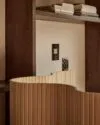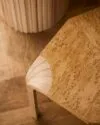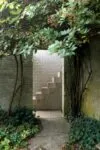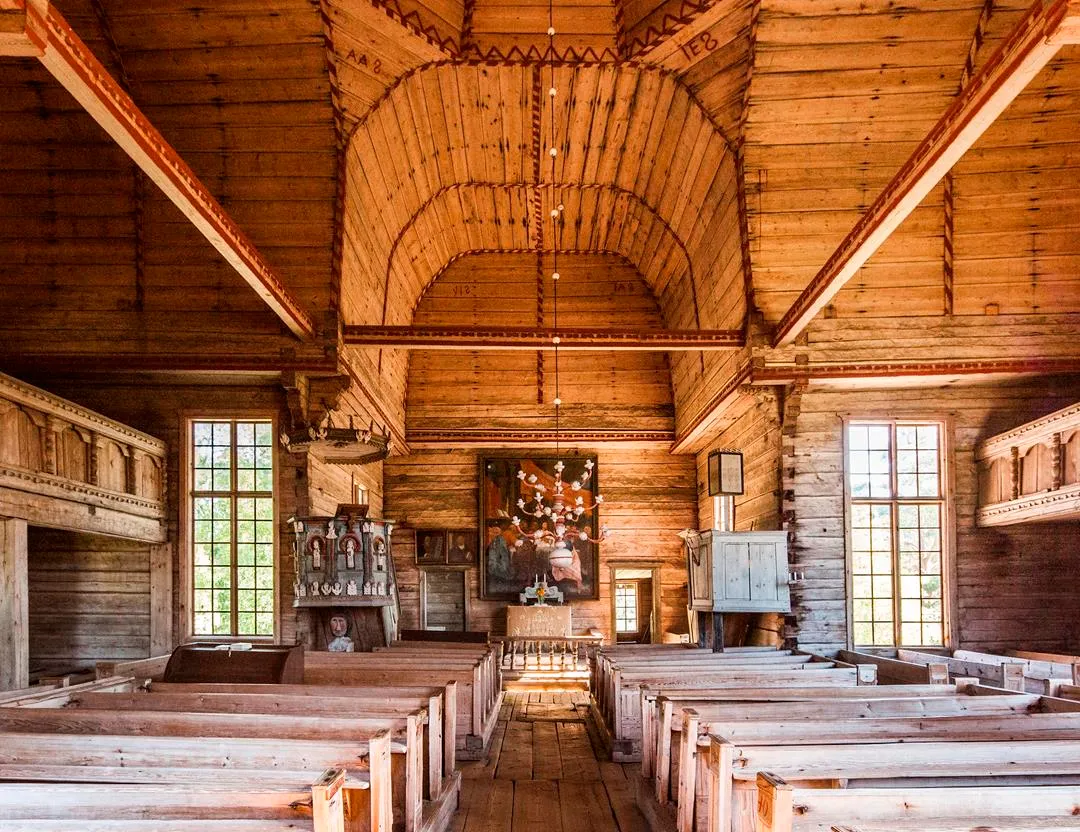“Throughout history, people have left their mark on the landscape, the built environment, artefacts, and culture. With time and human action, this evidence of past achievements becomes blurred and eventually disappears altogether. By cherishing these traces as humanity’s common heritage, we can understand the past and preserve important knowledge for future generations.” Anna and Eugeni Bach
The new museum centre in Ruusupuisto park in Jyväskylä will open its doors to the public on 27 May 2023 with the Aalto2 exhibition Human Traces – World Heritage. The exhibition sheds light on the heritage of the past and, through it, reflects on the present and the future – what traces of our time will be left for posterity? The exhibition as a whole, to be shown at the Aalto2 Museum Centre, consists of a series of five displays that explore the diversity of built and cultural heritage.
Human Traces – World Heritage
The Aalto2 opening exhibition, produced by the Alvar Aalto Museum and the Museum of Central Finland, will present both tangible and intangible heritage, from the Great Wall of China and Finnish sauna culture to modern architecture, linking it to works by Alvar Aalto. The curation and design of the exhibition are by the Finnish-Spanish architect duo Anna and Eugeni Bach. Each of the five displays making up the whole shed light on the concept of heritage: World Heritage, Famous Sites, Finnish Sauna Culture, Finland and the World, The Moderns.
World Heritage / 27 May 2023 – 7 January 2024
World Heritage Sites belong to all nations, regardless of their geographical location. They speak of the diversity of cultures and natural phenomena, and they are tangible proof of the link between people and nature. The display explores the mission of the United Nations Educational, Scientific and Cultural Organization (UNESCO) to discover, identify, protect and preserve cultural and natural heritage around the world considered to be of outstanding value to humanity.
Famous Sites / 27 May 2023 – 7 January 2024
The display highlights ten important World Heritage Sites from around the world. These sites have, thanks to mass tourism, become world-famous in the 20th century, yet visitors often only explore them superficially without fully understanding the history and details behind them.
Finnish Sauna Culture / 27 May 2023 – 21 January 2024
The display explores the secret of the Finnish sauna, which has been working its magic for a millennium. For Finns, sauna is part of everyday life and festive occasions in all seasons. It is part of the Finnish way of life and living environment. The sauna has always been a sacred place, and even in the current fast-paced life, it is where people go to wind down and wash away the everyday hustle, both mentally and physically. Bathing in the sauna is also a part of Finnish culture outside the sauna rooms: poems, songs and games have orally passed on the sauna tradition for generations. Its inclusion in the UNESCO list of intangible cultural heritage is a recognition of Finland’s beloved sauna and, in part, helps to safeguard the tradition in a changing world, while providing the whole world with an opportunity to get to know this unique Finnish custom.
Finland and the World / 27 May 2023 – 7 January 2024
There are seven UNESCO World Heritage Sites in Finland: the Struve Geodetic Arc, the Kvarken Archipelago, the Bronze Age Burial Site of Sammallahdenmäki, the Petäjävesi Old Church, the Verla Groundwood and Board Mill, Old Rauma, and the Fortress of Suomenlinna. These are presented alongside similar sites from around the world. The juxtaposed sites have significant features in common with the Finnish sites, helping to place the latter in a global context. It tells us that the world is a whole, and that it is our duty to look after it.
The Moderns / 27 May 2023 – 22 October 2023
One example of the development of culture over the last one hundred years is modern architecture, which is made possible by new construction materials and technologies, and which is intrinsically linked to the social, economic and technological developments of the 20th century. The purpose of this display is to stimulate discussion about what constitutes modern world heritage now and in the future. The UNESCO World Heritage List already includes many of the most important architectural sites of the previous century, but many significant ones are still excluded. The display links the architectural sites already included in the World Heritage List to Alvar Aalto’s extraordinary life’s work.
PERMANENT EXHIBITIONS
The new permanent exhibition at the Alvar Aalto Museum and the permanent exhibition at the Museum of Central Finland are also part of the Aalto2 offering.
AALTO – Work and Life
In the new permanent exhibition at the Alvar Aalto Museum, AALTO – Work and Life, museum visitors can explore the life and work of Alvar Aalto (1898–1976). Aalto is known as an architect and designer who worked with his wives Aino Aalto (1894–1949) and Elissa Aalto (1922–1994), but also with a wide range of architects at his office, and with other important collaborators.
According to Alvar Aalto, architecture and good design can solve problems in human life and society, as it is the architect’s duty to serve the little person. The exhibition goes beyond the surface – into Aalto’s design process itself – in which he treated every design brief as a new problem to be solved. The architect worked to solve each problem using a holistic approach, whether he was working on a design for a light fitting or a plan for a city centre or an entire river valley. Aalto’s tangible and intangible heritage forms an astonishingly extensive and diverse whole, as evidenced by the approximately 200 completed buildings, as well as the numerous pieces of furniture, light fittings and glass objects that are still in production and that have become classics.
In addition to Aalto’s fascinating life story, the exhibition experience draws on architectural drawings, letters, photographs, scale models, and design objects from the Alvar Aalto Foundation’s collection. The exhibition offers information and experiences both to expert Aalto enthusiasts and to those who are exploring the rich world of architecture and design for the first time.
The exhibition design is by the architect Asmo Jaaksi (JKMM Architects), and the graphic design is by Tiina Ekosaari. The presentation leaves room for the beautiful interior architecture of the exhibition hall, including the Aalto-designed aurora borealis-themed wall, offering exhibition visitors an experiential spatial experience.
Exploring Central Finland
How would you describe the character of Central Finland? The Museum of Central Finland’s permanent exhibition traces the spirit of Central Finland from prehistoric times to the year 2000. The exhibition offers people of all ages a wide range of things to see, hear, and do. Visitors to the exhibition can listen to memories and stories, admire and marvel at the changing environment of Central Finland, take in a film, read a comic strip about the founding stages of the city of Jyväskylä, or immerse themselves in a smoke sauna, a sports event, or rap music. And how would you feel about trying the magic of 1960s dancing to music from a jukebox? Children can play games from the past, visit the market, play hopscotch, or try their hand at making their own rock painting using modern technology. And what does a trip to the Jyväskylä of more than one hundred years ago look like, with young Alvar as your guide? Furthermore, the exhibition features two large-scale models of the city of Jyväskylä.
The Aalto2 Museum Centre is a new meeting place for architecture, design and cultural heritage in Jyväskylä. The centre will open in May 2023 in honour of the 125th anniversary of the birth of Alvar Aalto.
More information:
Alvar Aalto Foundation
Mari Murtoniemi, chief curator
tel. +358 40 355 9162
mari.murtoniemi@alvaraalto.fi
Museum of Central Finland
Ilja Koivisto, senior curator
tel.+358 50 311 8879
ilja.koivisto@jyvaskyla.fi
Top picture:
Petäjävesi old church. Photo Eugeni Bach.
More from Alvar Aalto:

Screen 100 by Alvar Aalto now comes in a number of new sizes – Artek
Screen 100 brings Alvar Aalto’s free-flowing, organic form — one of his predominant architectural themes …

A special limited edition of Stool X602 is released to celebrate 90 years of Artek
A special limited edition of Stool X602 is released to celebrate 90 years of Artek, …

Artek celebrates its 90th anniversary by reintroducing some gems from its archive by Alvar Aalto
Gems from the Archive Artek celebrates its 90th anniversary by reintroducing some gems from its …

The Marie-José Van Hee exhibition opens as part of the City of Light festival!
Join us for the opening of Marie-José Van Hee’s exhibition For Sun and Wind to …

Marimekko’s most iconic prints by designer Maija Isola combine with the purity of Alvar Aalto’s design
As part of its 90th anniversary festivities, Artek has joined forces with Finnish design house …

Artek + Marimekko Collection Launch
The exhibition is open from September 5th until October 4th, 2025 during the store opening …

The Creating for the Everyday – Aino, Elissa and Alvar Aalto exhibition
The Creating for the Everyday – Aino, Elissa and Alvar Aalto exhibition opened at the …

Artek Celebrates Multi-Layered Living with “Crafted Through Time” Collection
Creating interiors that merge function with artistic expression has been central to Artek’s ideology since …

Summer 2025 Exhibitions at Paimio Sanatorium: Time, Beauty, and Layers of Memory
Paimio Sanatorium’s Summer 2025 exhibition programme invites visitors to pause and experience beauty through design, …

Significant Aalto exhibition opening at the Serralves Museum, Portugal
Photo: Alvar and Elissa Aalto in Maison Louis Carré, France 1959. Photo © Alvar Aalto …


